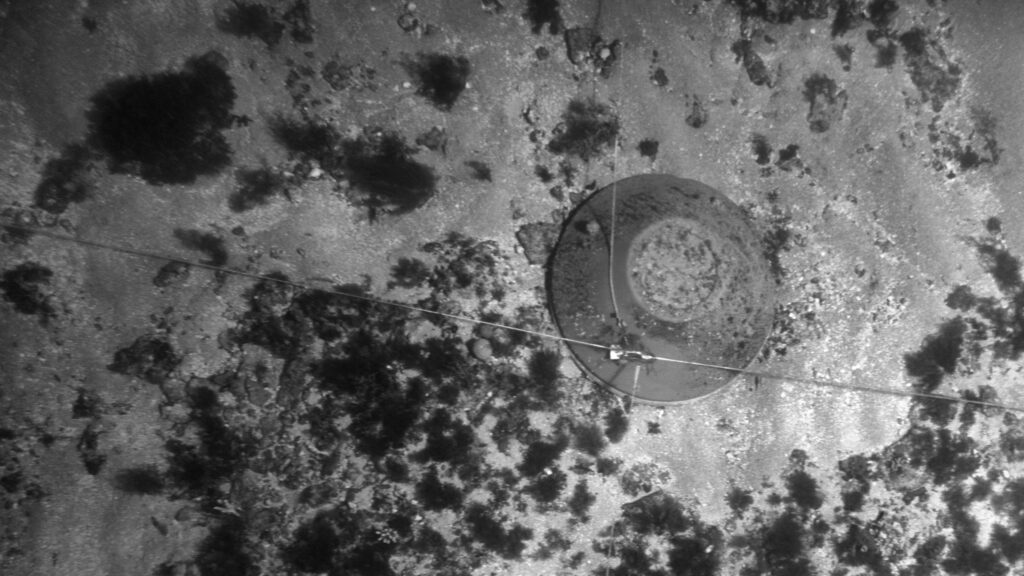Undersea dominance in response to Australia’s new strategy to support regional security
Undersea dominance in response to Australia’s new strategy to support regional security
The Watch interviewed CMDR Sean Leydon (retired), Regional Manager at Forcys Australia, on the subject of the latest ADF Defence Strategy Review (DSR). The DSR sets out the Australian Government’s strategic direction for defense over the next decade.
Leydon clearly understands the significance of the DSR: “It is clear that the Government is committed to investing in new and innovative technologies, and that the maritime domain will be a key focus of this investment. There are a number of reasons for this. First, the Indo-Pacific maritime domain is becoming increasingly contested, and there is a growing risk of conflict. Second, the maritime domain is critical to Australia’s economic security. Australia is a major exporter of resources, and the maritime domain is essential for the safe and efficient movement of these resources.”
The DSR identifies a number of key areas where Australia needs to invest in order to strengthen its maritime capabilities. These include:
- Uncrewed systems: These have the potential to revolutionize maritime warfare. They can be used for a variety of tasks, including surveillance, reconnaissance, and strike. Australia is investing in the development and procurement of uncrewed systems in order to stay ahead of its adversaries.
- Artificial intelligence: Another key technology that will have a major impact on maritime warfare. AI can be used to improve the performance of uncrewed systems, as well as to develop new capabilities such as autonomous decision-making.
According to Leydon: “The investments that are made in the coming years will have a major impact on Australia’s ability to protect its interests in the maritime domain.”
AUKUS and Pillar 2
AUKUS is a new trilateral security partnership between Australia, the United Kingdom, and the United States. It was announced in September 2021, and its primary goal is to strengthen the three countries’ ability to operate in the Indo-Pacific region. Pillar 2 of AUKUS is focused on key capabilities including undersea warfare. It will involve the three countries working together to develop new and innovative technologies, such as autonomous underwater vehicles. These technologies will be used to improve the three countries’ ability to detect, track, and defeat submarines.
Leydon understands that the importance of undersea warfare cannot be overstated. According to him: ”Submarines are a major threat to surface ships and aircraft. They are also a key asset for countries that are seeking to project power in the maritime domain. The development of new and innovative technologies is essential for maintaining a strong undersea warfare capability and integral to the DSR. AUKUS Pillar 2 will help the three countries to do just that. Under AUKUS Pillar 2 the Undersea Robotics Autonomous Systems (AURAS) project, will pave the way for underwater networks consisting of crewed and uncrewed vessels, or also a networked underwater range enabling the navy to share information and coordinate actions between their vessels. This would allow the Navy to operate more effectively and efficiently and would give it a significant advantage over adversaries.
Leydon continues: ”As you know, uncrewed systems are playing an increasingly important role in maritime warfare. They can be used for a variety of tasks, including surveillance, reconnaissance, and strike. As the maritime domain becomes increasingly contested, uncrewed systems will become even more important. Why is that? Consider this:
- They are less expensive to operate.
- They are less vulnerable to attack.
- They can operate in more dangerous environments.
However, uncrewed systems are not a replacement for crewed systems, they play a complementary role. By working together, crewed and uncrewed systems can provide a more comprehensive and effective maritime warfare capability.”
While the uncrewed systems are attracting a lot of attention, the payloads cannot be underestimated. Leydon explains: “The sensors and effectors provide the capability, the platform delivers it. It’s as simple as that.”
“Obviously, it’s important that the design of the platform meets the overall purpose of the capability, that it’s fit for its purpose, such as a frigate for a medium sized, smaller armed, fast platform compared with a larger destroyer designed for a greater armament.
The same goes for an AUV – it’s important that the payload is not only high quality (such as a multi-Aperture sonar, high quality camera or laser), but its navigation, communications and tracking systems are also high quality and precise allowing it to go where it’s supposed to and find its way back. Ideally, you want both the sensors and platforms to be built using modular designs – this allows for smoother integration of the sensors and makes future upgrades more feasible.
In other cases, a designed platform isn’t even needed. For example, the dropping or strategic placement of underwater sensors will provide you with an acoustic range that can detect an adversary’s AUV, submarine or underwater vehicle.”

Joining Forcys
Sean recently joined Forcys and is spearheading our Australian efforts, “I think Australia and its UK and US partners have a lot to gain from AUKUS and the technological transfer of capabilities that already exist. The DSR specifically speaks about the Pillar 2 ‘Trilateral delivery’ or joint R&D of enhanced capabilities, this collaboration with companies like Forcys will help provide the ability for all three nations to move forward with information sharing and technology cooperation. I’m especially excited about the opportunities for Forcys with AUKUS Pillar 2 undersea warfare – from the underwater acoustic communication network in Smart Sound Plymouth from our Technology Partners Sonardyne, the world leading intruder detection sonars from Wavefront already deployed with navies around the globe and to our AUV payloads. These are just some of the amazing proven capabilities that Forcys offer.”
Want to find out more or speak to Sean Leydon? Please get in touch.
More from The Watch
ViperFish a case study for seamless integration of underwater defense technology
ViperFish integrates cutting-edge underwater defense technology

Share On